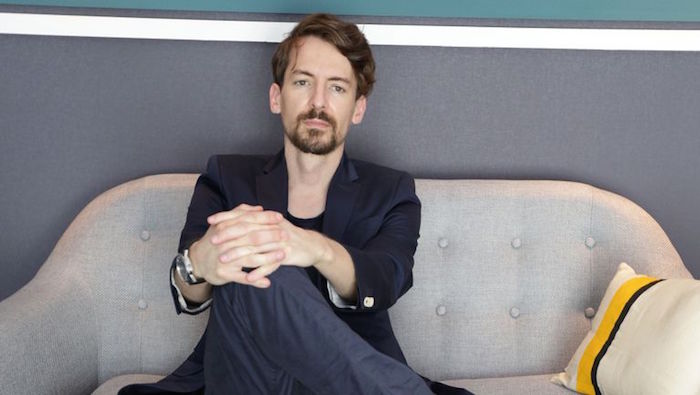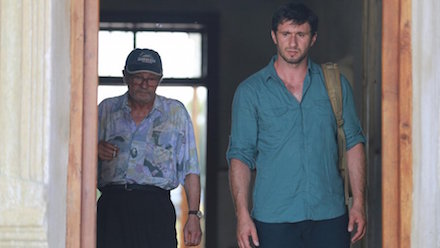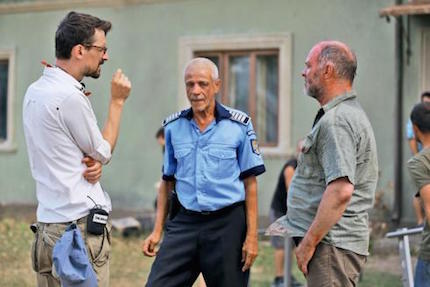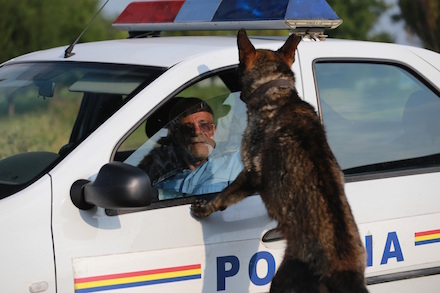RABBIT: THE LUKE SHANAHAN INTERVIEW
 Thursday, May 10, 2018 at 10:36AM
Thursday, May 10, 2018 at 10:36AM Cryptophasia (noun): Language and/or transmission trends formed between twins that are comprehendible only to them.
The mysterious bond that twins share has proven fertile material for some of the world’s great film directors, from Brian De Palma (Sisters, 1972) and David Cronenberg (Dead Ringers, 1988) to Spike Jonze (Adaptation, 2002) and Olivier Assayas (Personal Shopper, 2016). In crafting his film debut Rabbit, the story of one twin’s descent into madness as she searches for her missing sister, Australian director Luke Shanahan joins a club of fearless filmmakers willing to walk a dark, ambiguous narrative path. The combination of Shanahan’s daring storytelling and the acting bravado of a cast that boasts Adelaide Clemons, Alex Russell and Belgian star Veerle Baetens has ensured a prominent festival profile for the thriller, shot in the South Australian hinterland.

Ahead of his film’s screening in Brisbane as part of the Monster Fest Travelling Sideshow, Shanahan spoke to SCREEN-SPACE about the challenges he set himself with his first feature…
SCREEN-SPACE: There are no easy passages, no sign-posted narrative shortcuts in Rabbit. You're not afraid to challenge, even confound your audience to tell this story…
SHANAHAN: I didn’t set out to create confusion. I’m not a fan of films that deliberately confuse. But I did see this as a film of two halves, of two twins, two stories. Then I leave it to the audience to join the puzzle together. I wrote the film as it appears and we shot the script in order. You could say the first half is more conventional than the second half and everyone seems to have a favourite half, referencing that idea of the favourite twin that Maude alludes to as her search continues. Identical twins are so intriguing that I did want the narrative journey to intrigue. Nothing is straightforward.
 SCREEN-SPACE: The film offers such a unique perspective I begrudgingly ask your influences. The 'Australian gothic' feel recalls Terry Bourke's Inn of The Damned (1975); some twists are reminiscent of Pascal Laugier's horror classic Martyrs (2008)…
SCREEN-SPACE: The film offers such a unique perspective I begrudgingly ask your influences. The 'Australian gothic' feel recalls Terry Bourke's Inn of The Damned (1975); some twists are reminiscent of Pascal Laugier's horror classic Martyrs (2008)…
SHANAHAN: You’ve nailed it in two. But I borrowed from a bunch more; throw in The Wicker Man, Rosemary’s Baby and Wake in Fright. I like horror played fairly straight and most of my ‘mood books’ I used as influence covered films that aren’t straight horror stories, with the exception of Martyrs. Drama really, played straight. (Pictured, above, from left: producer David Ngo, actress Adelaide Clemons, Shanahan, and actor Alex Russell)
SCREEN-SPACE: When did the complex psychology shared by twins first present itself as a story concept?
SHANAHAN: I had a friend who was an identical twin and we started talking about connections. She mentioned that although at times she isn’t close with her twin, she would feel it if she was being tortured. I thought, okay, wow, that’s a weird thing to say. I then tried to examine (a basis) for a thrilling and intriguing tale.
 SCREEN-SPACE: The shoot finally happened after some convoluted financing gelled - SAFC, MIFF Premiere Fund, the Level K team, to name a few of the 'money men' who stepped up. What lessons were learnt about the modern indie film financing landscape by the time you started rolling…?
SCREEN-SPACE: The shoot finally happened after some convoluted financing gelled - SAFC, MIFF Premiere Fund, the Level K team, to name a few of the 'money men' who stepped up. What lessons were learnt about the modern indie film financing landscape by the time you started rolling…?
SHANAHAN: That’s a big question. I know to raise the funds, it does sound like a committee but all (the financiers) involved gave us full reign to make a truly independent film. And the most important thing that David Ngo (producer) gave me was creative freedom. Essentially, we had final cut and throughout the entire process, David and I worked together as sounding boards for each other. That may never happen again and I am truly grateful that I got to do it. The biggest lesson I learnt was to follow your gut and your instinct. When it’s just you, that’s all you've got. I like the responsibility of living by the creative choices you make. Is the film perfect? Of course not, but it was the film I wanted to make. (Pictured, above: Shanahan on set with DOP Anna Howard; photo Ian Routledge)
SCREEN-SPACE: There are some bold stylistic flourishes, reminiscent of Italian giallo cinema. Firstly, the 'big red screen', that moment when the entire screen is filled with a 'Lynch-ian red'…
 SHANAHAN: That was a moment that would no doubt have been pulled up by a committee or a conservative distributor. I still can’t believe we got away with a big chunk of red in the middle of the film. That makes it sound like an indulgence, which it is, but it lends itself to the dichotomy of the film and the narrative structure of two halves. It’s crucial in that respect. That signals that we’ve gone down the ‘rabbit hole’, the moment that the film shifts. I wanted to give the audience a moment, smothered with a big fat organ chord , to take that in. It’s over the top for sure, but I like it. It’s a tip of the hat to giallo and Italian horror cinema, a broad brush stroke that makes me smile. (Pictured, above: Adelaide Clemons, as Maude, in Rabbit)
SHANAHAN: That was a moment that would no doubt have been pulled up by a committee or a conservative distributor. I still can’t believe we got away with a big chunk of red in the middle of the film. That makes it sound like an indulgence, which it is, but it lends itself to the dichotomy of the film and the narrative structure of two halves. It’s crucial in that respect. That signals that we’ve gone down the ‘rabbit hole’, the moment that the film shifts. I wanted to give the audience a moment, smothered with a big fat organ chord , to take that in. It’s over the top for sure, but I like it. It’s a tip of the hat to giallo and Italian horror cinema, a broad brush stroke that makes me smile. (Pictured, above: Adelaide Clemons, as Maude, in Rabbit)
SCREEN-SPACE: And, yes, that “big fat organ chord”, that operatic wall-of-sound that you employ...
SHANAHAN: Mike Darren (composer) and I sat down at the start and I told him that no idea would be taken off the table. Be bold. Be loud. We’re making a wild film and I like soundtracks that aren’t just backing music or wallpaper. Music is a character for me and that’s my Kubrickian reference. I can turn the picture off and hear the film. I love that. I’m a big collector of soundtracks and I hope that we’ve reared a nice one here too.
SCREEN-SPACE: Rabbit relies upon a very precise structure to convey the themes of memory and connectivity and loss. Do you adhere to the old adage that the editing process is the final draft of the script?
SHANAHAN: I guess I do. Stu Morley (editor) and I have been working together for many years. We always would speak about the breath and flow of the drama. It’s what we relied upon. He has such a beautiful manner when it came to working scenes in the edit. He’d make a broad cut and then we’d finesse. He told me to concentrate on what information I needed to convey from each scene. This was invaluable, as I’d sometimes get caught up with the flourishes, as you do shooting your first feature. We also had voiceover that we needed to guide the audience through a lot of the third act. It was a juggle but early preparation meant that most of what we set out to do didn’t throw too many curveballs within the edit. Our aim was to make sure we gave the audience enough information to understand the story without pulling back the curtain completely. You’ve got to have that chat in the cafe or bar after the film, don’t you?
RABBIT will screen May 25 at Events Cinema Myer Centre as part of the 2018 Monster Fest Travelling Sideshow. Details can be found at the official website. A North American release is being planned through distributor The Orchard.
 Australian Film,
Australian Film,  Independent Film,
Independent Film,  Thriller,
Thriller,  Twins
Twins 










